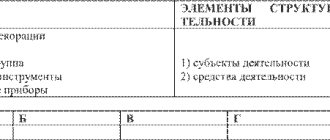Identification is the likening of a person to another individual, group or fictional character. Identification is a defense mechanism of the psyche, which is contained in the unconscious identification with an object, which causes anxiety or fear. Identification is translated from Lat. in the language “identificare”, as identification, the root “iden” means something that does not change for a long time. Given this definition, we can formulate the concept of identification as the similarity or correspondence of something to an existing sample, taken as a basis, having designated stable parameters. The mental defense mechanism can be situational, unconscious, in which a person likens himself to a specific other significant person, as a model. The basis of this similarity is the emotional connection between people.
Concept
Identification is identifying oneself with another person, members of a group, or a character in a movie or book. In other words, the concept of identification in psychology can be considered as likening oneself to someone.
Identification is divided into two types: primary and secondary. The primary one can be attributed to the formation of the child’s personality, going through the process of identification. First, the baby identifies itself with its parents.
Secondary identification is identifying oneself with people who are not parents.
What is identity: definition
This is self-identification, the ability of an individual to determine his membership in any group. Social identity is important for the development and formation of personality. Without self-determination, we cannot move forward, live among people, live in harmony with ourselves. Let's take a closer look at the concept and definition.
Concept of identity
What is this, according to Wikipedia? This property of the psyche is to express in a concise form for a person how he imagines his belonging to different groups and communities.
Identity in psychology is a person’s awareness of his belonging to some social position, role, or group of people. It helps the individual with the following:
- find a balance between personal and public;
- combine your experience and the experience of society;
- to protect one’s integrity and immutability, despite changes in the outside world.
Simply put, identity is a person’s attitude towards some group or some person. An individual perceives himself as the same as someone else. He expresses this not only at the internal level, but also at the level of appearance, behavior, etc.
Identity formation
According to Erikson's theory, formation is due to the resolution of age-related crises. Each successful resolution gives new ego-power to the subject. If the conflict is resolved unsuccessfully, then problems with self-determination arise. We usually call this “being confused about ourselves.”
Consider the crises that Erik Erikson spoke about:
- Up to 1 year. This is a crisis of trust and mistrust. The strength in a favorable resolution of a crisis is hope. The child is looking for an answer to the question “Can I trust the world?”
- From 1 to 3 years. Resistance to independence (autonomy) and feelings of shame. Strength with a favorable resolution is will. The child is looking for an answer to the question “Can I control my body and behavior?”
- From 4 to 6 years. Contradiction between initiative and guilt. Strength with a favorable resolution is determination. The child is looking for an answer to the question “Can I be independent from my parents, discover and develop my capabilities on my own?”
- From 7 to 12 years. Crisis of hard work and feelings of inferiority. Strength with a favorable resolution is self-confidence. The child is looking for an answer to the question “Am I capable of...?”
- From 13 to 19 years old. Ego identity crisis and role confusion. Strength with a favorable resolution is fidelity. A teenager (young man) is looking for an answer to the question “Who am I, what am I?”
- From 20 to 25 years. Crisis of intimacy and isolation. Strength with a favorable resolution is love (the ability to love). A young man is looking for an answer to the question “Can I build close relationships?”
- From 26 to 64 years old. Crisis of productivity and stagnation. Strength with a favorable resolution is caring. A person is looking for an answer to the question “What is the meaning of my life? What have I achieved and what else do I want to achieve?
- From 65 to death. Crisis of integrity and feelings of hopelessness (despair). Strength with a favorable resolution is wisdom. A person answers the question “Was there meaning in my life? Am I happy with her?
The resolution of the conflict depends on the development of the individual at the previous stage and on the general spiritual level of the society in which the subject lives.
Identity structure
E. Erickson identified four elements in the structure:
- Individuality. A person realizes that he and his experience are unique; he perceives himself as a separate, independent unit of society.
- Identity, integrity. A person feels meaningful and coherent in life. He sees and accepts the connection between the past, present, future, between what he was and what he wants to become.
- Synthesis. A feeling of inner harmony, unity and synthesis of images from childhood and the present.
- Social solidarity. A person shares the ideas of society and the individual group to which he belongs. He expects recognition, respect, and support from the reference group. He expects that its participants will appreciate his involvement.
Types of identification
In psychology, personal identification is of the following types:
- Situational. It appears from childhood. This is identification with parents, brothers and sisters. In general, with family members whom the child loves and strives to be like.
- Group. Assimilation of community in the group. It manifests itself in the fact that a person recognizes the foundations and values of the group as his own. Understands himself and accepts himself as a member of this group.
- Social identification. In this case, the person identifies himself as an agent of the social circle.
- Personal. This is a set of characteristic traits inherent in a particular person that allows him to be distinctive from others and become similar to himself. Personal identification in psychology understands constancy and unity. We are talking about life attitudes, goals, and motives of the individual. Thus, personal identification is not just any character trait, but the whole essence of a person, his “self,” manifested in actions and deeds, in reactions to these actions.
There is also political identification, but it is included in the personal section. This is a specific life position of an individual and identification of oneself with this position.
Empathy
Over time, a person will move away from his parents and may adopt the behavior and character traits of literary heroes. Bravery in extreme situations, honesty, valor, etc. can be the merit of the books on which a child or teenager was raised. I have a separate article about what empathy is.
The impact of films is weaker, since the period of their influence on the human psyche is short-lived. Identifying with the hero of a work of art helps to better understand the work and evokes vivid emotions and experiences.
At a young age, many girls show a penchant for reading romantic literature. From books they learn more about how true ladies behave, as a result of which they themselves develop such traits as morality, delicacy, and femininity.
You can use the desire for identification for your own purposes. For example, during a divorce, it is recommended to read books about strong women, or heroic epics to develop self-confidence.
By the way, all this is written very interestingly in Yulia Fomina’s book “Psychological characteristics of fairy-tale characters and personal identification.” It tells exactly how fairy tales influence a child and what consequences they lead to in adulthood. Who knows, maybe in this work lies the answer to the question: “Why am I like this?”
Let's give a definition. Mechanisms
This is the definition: identification in psychology is a person’s need to establish coincidences and similarities with the object of his veneration. Note that this is an internal unconscious need.
We are talking about identification. What's behind this? What is the mechanism of identification in psychology?
S. Freud also spoke about this. He was the first to develop this mechanism. According to Freud, a person who perceives the world as a system of riddles and mysterious things is unable to independently realize the true purpose of the world around him and the meaning of existence. Such a person needs a system of reference points in order to be able to compare himself with a specific object.
Based on this, Freud considered the identification mechanism as an attempt by a weak person to compare himself with those individuals who are authorities for him. A weak person is afraid of reality. And such a mechanism allows him to reduce his fear of her.
Components of Identification
When a person identifies himself with someone, he tries on the parameters of that personality. Focusing on them, he unconsciously tries to turn into an object of imitation, to look at the world through his eyes. Psychologists identify the following components of identification in psychology:
- Transferring the sensations of the object of imitation into your inner world, accepting his life attitudes and values.
- Projecting that personality onto yourself. A person begins to continue to imitate the object, that is, to identify himself with it. This helps to transfer one’s own character, emotional component, desires, etc. to that person.
- An attempt to “live the life” of the object of identification. That is, acceptance and assimilation of its behavioral nature.
Identification features
A sign is an objective reflection of the properties of an object. In order for a feature to be considered an identification feature and to participate in the identification process, it must have the following properties (requirements for an identification feature):
- individuality - the qualitative and quantitative certainty of the set of properties (signs) of a single material object, which determines its differences from other objects that are homogeneous and similar in general characteristics;
- relative stability - preservation of the properties (signs) of an individual object during the identification period;
- displayability - the ability to capture in objects used in the identification process a set of features sufficient for drawing conclusions;
- reproducibility of characteristics - the ability to obtain characteristics of an identifiable object in samples for comparative research.
Classification of identification features
General signs
characterize the structure of the object as a whole (shape, color, size);
Particular characteristics
give an idea of the nature of individual parts of the object.
Group characteristics
relate to all objects of a group of homogeneous objects (for example, a series);
Individual characteristics
relate to an individual representative of this group (for example, an individual number).
External signs
are on the surface of the object and reflect its external structure;
Internal signs
– these are signs of an internal property (biological, physical, chemical properties of an object; for example, melting point).
Identification in psychology
This is a process in which a person completely rejects himself. He projects the object of identification onto his essence, tries to become something he has never been. That is, by leaving himself, such an individual tries on someone else’s role and tries to play it - to put it in simple words.
For the development and formation of personality, this is a normal process that manifests itself in childhood.
What example of identification in psychology can be given? Identification of the child with the father. A son or daughter is trying to learn the way of thinking of their beloved parent and his actions.
What is the difference between identification and imitation? After all, these concepts are often confused. Their main difference is that imitation is a conscious imitation of someone. And identification occurs at an unconscious level. While a person goes through his individual path, it acts. But sometimes an individual cannot find himself. And then identification turns into a barrier that inhibits human development and takes on the character of a pathology.
The nature and structure of communication. Communication as interaction
Communication - 1) a complex, multifaceted process of establishing and developing contacts between people, generated by the needs for joint activities; includes the exchange of information, the development of a unified interaction strategy, perception and understanding of the partner; 2) The interaction of subjects carried out by sign means, caused by the needs of joint activity and aimed at a significant change in the state, behavior and personal and semantic formations of the partner.
Communication is a multifaceted process of developing contacts between people, generated by the motives of joint activities.
An active person always communicates: his activities inevitably intersect with the activities of other people. But it is precisely this intersection of activities that creates certain relationships of an active person not only to the subject of his activity, but also to other people. It is communication that forms a community of individuals performing joint activities. Thus, the fact of the connection between communication and activity is stated in one way or another by all researchers. In the real practical activity of a person, the main question is not how the subject communicates, but about what he communicates. Here again, an analogy with the study of activity is appropriate: if the analysis of the subject of activity is important there, then here the analysis of the subject of communication is equally important.
Three sides of communication, structure:
The communicative side in the narrow sense consists of the exchange of information between communicating individuals. The interactive side consists in organizing interaction between communicating individuals, i.e. in the exchange of not only knowledge, ideas, but also actions. The perceptual side of O. means the process of perception and cognition of another by communication partners and the establishment of mutual understanding on this basis.
In reality, each of these sides does not exist in isolation from the others.
Place of interaction in the structure of communication.
Interaction is accidental or intentional, private or public, long-term or short-term, verbal or non-verbal personal contact of 2 or more people, resulting in mutual changes in their activities, behavior, attitudes, relationships.
Interaction (in the narrow sense) is a system of interdependent individual actions connected by a causal cyclic dependence, in which the behavior of each participant acts as both a stimulus and a reaction to the behavior of the other. 2) the relationship of subjects in joint activities.
There are different approaches to understanding the relationship between communication and interaction.
1. The content of communication is reduced to the content of interaction: identification of communication and interaction. Both are interpreted as communication in the narrow sense (i.e., as an exchange of information).
22 pages, 10904 words
Categories of psychology. (image, motive, reflection, psyche, consciousness, ...
... performing certain functions). Category of communication. Communication is a multifaceted process of establishing and developing contacts between people, generated by the motives of joint activities. Communication includes communicative, ... information, opinions that people exchange. The interactive aspect of communication is the construction of a general interaction strategy. In communication, people set themselves the goal of...
2. Understanding interaction as a form, and communication as the content of a certain process.
3. The connected but independent existence of communication as communication and interaction as interaction.
In Russian psychology: interaction acts as an organization of joint actions. If the communicative process is born on the basis of joint activity, then the exchange of knowledge and ideas about this activity inevitably presupposes that the achieved mutual understanding is realized in new joint attempts to further develop the activity and organize it. During the activity, it is extremely important for participants not only to exchange information, but also to organize an “exchange of actions” and plan common activities. With this planning, it is possible to regulate the actions of one individual by “plans matured in the head of another,” which makes the activity truly joint, when its carrier will no longer be an individual, but a group.
This solution to the issue excludes the separation of interaction from communication, but also excludes their identification: communication is organized in the course of joint activity, “about” it, and it is in this process that people need to exchange both information and the activity itself, i.e. develop forms and norms of joint action.
The main signs of interpersonal interaction:
Objectivity. The presence of an external goal towards which joint efforts are directed.
Explicitness. Accessibility for an outside observer and the possibility of registration (audio/video).
Situational. Interaction is regulated by norms, rules, etc. in a contact situation.
Reflexive polysemy. Conscious and unconscious levels of interaction. Wide semantic field of possible interpretations.
The psychological content of the process of exchange of actions includes three points: 1. taking into account the plans “ripened in the other’s head” and comparing them with one’s own plans; 2. analysis of the contributions of each participant in the interaction; 3. understanding the degree of involvement in the interaction of each of the partners.
Structure of interaction.
The so-called theory of action, or theory of social action (M. Weber, P. Sorokin, T. Parsons).
They recorded some components of interaction: people, their connections, the impact of others on others and, as a consequence of this, their changes. Task: search for the dominant factors motivating actions in interaction. Social interaction is based on interpersonal interactions; human activity in its broad manifestations is built on them; it is the result of individual actions. A single action is some elementary act; systems of actions are subsequently formed from them. Each act is taken on its own, in isolation. Elements: a) the actor, b) the “other” (the object towards which the action is directed), c) norms (by which the interaction is organized), d) values (which each participant accepts), e) the situation (in which the action is performed).
The actor is motivated by the fact that his action is aimed at realizing his attitudes (needs).
In relation to the “other,” the actor develops a system of orientations and expectations, which are determined both by the desire to achieve a goal and by taking into account the likely reactions of the other. Five pairs of such orientations can be identified, which provide a classification of possible types of interactions and can describe all types of human activity. Failure of the theory: the abstract scheme of action was not important for the empirical analysis of actions, the abstract elements of the structure of actions do not capture the content side of actions (since it is determined by the content of social activity as a whole).
1 page, 181 words
Key performance indicators of a teacher (through the eyes of students in grades 9–11)
... to the teacher. The maximum score is 75, which indicates the student’s high assessment of the teacher’s work.
Loss of social context: all the richness of social activity is derived from the psychology of the individual.
Another approach: describing the stages of development of the interaction structure (J. Szczepanski).
In this case, interaction is divided not into elementary acts, but into the stages through which it passes. The central concept for describing social behavior is the concept of social connection. It can be presented as the sequential implementation of: a) spatial contact, b) mental contact (mutual interest), c) social contact (joint activity), d) interaction (“systematic constant implementation of actions aimed at causing an appropriate reaction from the partner” ), e) social relations (mutually related systems of actions).
Analysis of the approach: spatial and mental contacts in this scheme act as prerequisites for an individual act of interaction, and thus, the scheme does not eliminate the errors of the previous attempt. But the inclusion of “social contact”, understood as joint activity, among the prerequisites for interaction largely changes the picture: if interaction arises as the implementation of joint activity, then the road to studying its substantive side remains open.
Transactional Analysis Approach to Interaction
.A direction that proposes regulating the actions of participants in interaction through regulating their positions, as well as taking into account the nature of situations and the style of interaction (E. Bern).
each participant in the interaction, in principle, can occupy one of 3 positions, which can be conditionally designated as Parent, Adult, Child. These positions are not necessarily associated with a corresponding social role: they are a psychological description of a certain strategy in interaction. Interaction is effective when transactions are of an “additional” nature, i.e. coincide: if the partner addresses the other as an Adult, then he also responds from the same position. If one of the participants in the interaction addresses the other from the position of an Adult, and the other responds to him from the position of a Parent, then the interaction is disrupted and may stop altogether. In this case, the transactions are “overlapping”.
According to exchange theory (J. Homans)
, each of us strives to balance rewards and costs to make our interactions sustainable and enjoyable, based on our previous experiences. The theory is based on four principles:
the more a certain type of behavior is rewarded, the more often it will be repeated;
if the reward for a certain type of behavior depends on the conditions, then the person will strive to recreate them;
if the reward is large, then the person is willing to expend more effort to obtain it;
When a person's needs are close to saturation, he is less willing to make efforts to satisfy them.
Using this theory, complex types of interactions can be described: power relations, negotiation process. This theory views social interaction as a complex system of exchanges driven by ways of balancing rewards and costs. High rewards can lead to loss of activity.
5 pages, 2092 words
C. G. Jung's typology and marital compatibility
... was developed by Jung himself; it was not developed in the Myers-Briggs typology. As a rule, its supporters only argue that, if desired, any type can get along... the relationship between an intuitive-logical extrovert and a sensory-logical introvert is a fairly effective interaction when solving business problems. Different relationships are suitable for different types of interaction. In family life...
Symbolic interactionism (J. Mead and G. Bloomer).
According to this theory, people's behavior in relation to each other and to objects in the world around them is determined by the meanings that they attach to them. J. Mead identified two types of actions:
insignificant gesture (automatic reflex such as blinking);
significant gesture (associated with understanding the actions and intentions of another person).
When we assign meaning to something, it becomes a symbol, i.e. a concept, action or object that expresses the meaning of another concept, action or object. The interpretation of the symbol is the basis for the response. Through this, people learn to interpret the meaning of certain symbols in the same way.
The central idea of this concept is that personality is formed in interaction with other individuals. The disadvantages of this theory include attaching too much importance to the symbolic aspects of interactions.
Impression management (E. Hoffman).
According to this theory, social interaction situations are similar to dramatic performances in which actors strive to create and maintain favorable impressions. People behave like actors on stage, using “sets” and “environments” to create a certain impression of themselves and others.
Types of interactions.
The most common is the dichotomous division of all possible types of interaction into 2 opposite types: cooperation and competition. In the first case, such manifestations are analyzed that contribute to the organization of joint activities and are positive from this point of view. The second group includes interactions that in one way or another “shatter” joint activity and represent a certain kind of obstacle to it.
Cooperation, or cooperative interaction, means the coordination of individual forces of participants (ordering, combining, summing up these forces).
Cooperation is a necessary element of joint activity, generated by its special nature. As for another type of interaction - competition, here the analysis is most often concentrated on its most striking form, namely conflict.
Interaction as an organization of joint activities.
Just as in individual activity its goal is revealed not at the level of individual actions, but only at the level of activity as such, in social psychology the meaning of interaction is revealed only if they are included in some common activity
Forms or models (Umansky): 1) when each participant does his part of the work independently of the others - “joint-individual activity”; 2) when a common task is performed sequentially by each participant - “joint-sequential activity.”; 3) when there is simultaneous interaction of each participant with all the others - “joint-interacting activity.”
Social relations are “given” in interaction through that real social activity of which interaction is a part. Interpersonal relationships are also “given” in interaction: they determine both the type of interaction that occurs under given specific conditions and the degree of expression of this type.
1 page, 467 words
Jung created a personality typology, identifying the introvert and
... which reflects intersex relationships, ideas about the opposite sex: Anima Jung created a personality typology, highlighting the introvert and extrovert types 46. A special mechanism that helps the development of feelings: Compensation 47. By ...
The emotional basis inherent in the system of interpersonal relationships, which gives rise to different assessments, orientations, and attitudes of partners, “colors” the interaction in a certain way. However, even in conditions of “bad” interpersonal relationships in groups given certain social activities, interaction necessarily exists. Consideration of interaction activities taken out of context is meaningless.
When analyzing interaction, the fact that each participant understands his contribution to the overall activity is also important: it is this awareness that helps him adjust his strategy. Only under this condition may the psychological mechanism of interaction that arises on the basis of mutual understanding between its participants is revealed.
Identification of psychological functions
It leads to the creation of a secondary character. That is, the individual transfers his true individuality into an unconscious state by very strongly identifying himself with the most developed function.
In psychology, the problem of gender identification is precisely this type. What is she like? One aspect of gender. is defined as the self-identification of a person with a certain gender. That is, this feeling of being a woman, a man, or an intermediate state. This exists, no matter how strange it may sound.
Gender identification usually corresponds to biological sex. But this does not always happen.
Gender identification. A person considers himself to belong to one of the genders, which means that his guideline is the requirements corresponding to this gender.
Defense mechanism
Identification in psychology can represent a defense mechanism. It is the idea of someone as oneself. The most striking example of such a mechanism is parents’ identification with their own children. The parent projects his own desires and needs onto the child, and then prescribes his achievements. For example, my mother dreamed of being a pianist all her life. But she became an accountant. She creates such antecedent factors in the environment that her daughter will follow this path. Against the child's will. And when she achieves success, my mother is as proud of herself as if she had succeeded as a pianist.
Adaptive process
Let's consider identification as an adaptive process. What does it consist of? In an attempt to become like a certain person, to adopt his features. Instead of an individual, there can be a group of people. This begins in childhood, so initially identification is quite primitive. Over time, a strong emotional attachment develops to the chosen object, or to a group of people. The person feels one with them and “absorbs” not only character traits and characteristics, but also the values, attitudes and patterns of behavior of the group or object of worship.
Adaptive identification can change over time. For example, if during her school years her target was a local bully and this gave her a certain social status, then an adult is unlikely to want to have the status of a criminal.
Content
- 1 Conceptual apparatus of the theory of forensic identification
- 2 Distinctive features of forensic identification
- 3 Scientific basis of forensic identification
- 4 Objects of forensic identification
- 5 Identification features 5.1 Classification of identification features
- 6.1 By subject
- 8.1 Tasks of forensic diagnostics
Interesting facts about Freudian identification
Z. Freud developed two key directions of identification in psychology: erotic and mimetic. The first refers to those people who act as objects of desire. The second is those people whom the individual looks up to. In other words, those they want to be like.
It is mimetic identification that serves as the “thread”. With its help you can control not only one person, but also a crowd. A group of people abandons their own ideals and turns their attention to one common leader. Another thing is that you need to try hard to gain authority among the crowd.
Let's summarize
What to remember from the article?
- Identification in psychology is identifying oneself with a person, group of people or image.
- It can be primary and secondary. Primary is typical for a child, secondary - for an adult.
- The identification mechanism, according to Freud, is that a weak person cannot rely on himself. He needs an authority with which he will identify his essence.
- Identification can be viewed as both a defense mechanism and an adaptive process.
- A defense mechanism is the transfer of one’s desires to another object, while the achievements of this object are regarded as one’s own. It is characteristic of parents in relation to children.
- The adaptive process is an attempt to become like an individual person, or a group of people, to adopt his/their values.
- According to Freud, identification is divided into mimetic and erotic.
Introduction
The term “personal identification”, derived from the medieval Latin word identifico - “I identify”, denotes a mechanism whose operation is based on the existence of an emotional connection between an individual and other people, primarily his parents, leading to assimilation, most often unconsciously, with these significant others. Focusing on another person as a model significantly increases the indicators of social learning. Due to identification, a small child develops behavioral stereotypes that form personality traits, determines value orientations and gender-role identity - this is an established empirical fact.
7 pages, 3160 words
Formation and development of personality
...on how the very mechanism of personality formation and development is implemented. These discrepancies are caused by various ... psychological defenses: rationalization, projection, alienation, replacement, identification. The formation of deformations is initiated by professional stagnation of a specialist, and ... of an individual, conditions arise for stagnation of professional development. The development of professional stagnation depends on the content and...
Identification also acts as one of the mechanisms of cognition and understanding of another person. There are many experimental studies of the process of identification and elucidation of its role in the communication process. In particular, a close connection has been established between identification and another phenomenon that is similar in content - empathy.
The phenomenon of identification was first described in the works of Z. Freud in 1899 and is studied in detail by both psychoanalysts and behaviorist or cognitive science-oriented researchers. In Soviet psychological science, many interesting theoretical and empirical studies have been devoted to the study of this phenomenon (Vygotsky L.S., Kon I.S., Mukhina V.S., etc.)
The purpose of this work is to reveal the concept of “personal identification”. This goal determines the solution of the following tasks:
- Consider the relationship between the concepts of “identification” and “identity”;
- Describe the mechanism of personality identification in ontogenesis;
- Give an idea of some domestic and foreign theories of personal identification.









